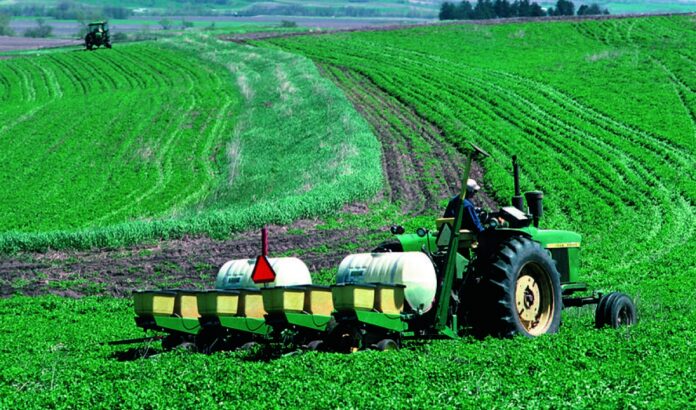Agriculture, a cornerstone of human civilization, has undergone significant transformations over the centuries. In recent years, technological advancements have accelerated, bringing forth innovations that promise to revolutionize the industry. These breakthrough technologies address challenges such as food security, sustainability, and climate change, ensuring a more efficient, resilient, and productive agricultural sector. This article explores some of the latest innovations in agriculture and their profound impacts.
1. Precision Agriculture
What is Precision Agriculture?
Precision agriculture involves the use of technology to monitor and manage field variability in crops. This approach includes the use of GPS, remote sensing, and data analytics to optimize field-level management concerning crop farming.
Impact
- Increased Efficiency: By using data-driven insights, farmers can apply water, fertilizers, and pesticides more precisely, reducing waste and costs.
- Higher Yields: Precision agriculture techniques help in identifying the specific needs of different parts of a field, ensuring that crops receive the exact nutrients and care required, leading to increased yields.
- Environmental Benefits: Reducing the overuse of chemicals minimizes the environmental footprint of farming, promoting sustainable practices.
2. Vertical Farming
What is Vertical Farming?
Vertical farming is the practice of growing crops in vertically stacked layers, often integrating controlled-environment agriculture, which optimizes plant growth.
Impact
- Space Efficiency: Vertical farming allows for agriculture in urban areas and other environments where space is limited.
- Reduced Water Usage: These systems use up to 95% less water compared to traditional farming, making them highly sustainable.
- Year-Round Production: Controlled environments enable year-round cultivation, irrespective of external weather conditions, ensuring a consistent food supply.
3. CRISPR and Genetic Editing
What is CRISPR?
CRISPR (Clustered Regularly Interspaced Short Palindromic Repeats) is a revolutionary genetic editing technology that allows for precise modifications to DNA.
Impact
- Enhanced Crop Resistance: Genetic editing can produce crops that are more resistant to diseases, pests, and environmental stresses.
- Improved Nutritional Value: Scientists can enhance the nutritional content of crops, addressing malnutrition and improving public health.
- Faster Breeding Cycles: CRISPR speeds up the breeding process, enabling the rapid development of new crop varieties.
4. Drones and UAVs
What are Drones in Agriculture?
Drones, or unmanned aerial vehicles (UAVs), are used in agriculture for tasks such as aerial surveying, crop monitoring, and precision spraying.
Impact
- Enhanced Monitoring: Drones provide high-resolution images and data, allowing farmers to monitor crop health, soil conditions, and pest infestations in real-time.
- Efficient Spraying: UAVs can precisely target areas needing pesticides or fertilizers, reducing chemical use and operational costs.
- Rapid Data Collection: Drones significantly speed up the process of data collection and analysis, facilitating timely decision-making.
5. Internet of Things (IoT)
What is IoT in Agriculture?
IoT in agriculture involves the use of connected devices and sensors to gather and analyze data on various farming operations.
Impact
- Improved Resource Management: IoT devices can monitor soil moisture, weather conditions, and crop health, enabling more efficient use of water, energy, and other resources.
- Automated Farming: IoT technology supports automation in farming operations, from irrigation systems to autonomous machinery, enhancing productivity.
- Data-Driven Decisions: Real-time data provided by IoT devices help farmers make informed decisions, improving crop management and yields.
6. Artificial Intelligence (AI) and Machine Learning
What is AI in Agriculture?
AI and machine learning involve the use of algorithms and computational models to analyze data and make predictions or decisions in farming.
Impact
- Predictive Analytics: AI can forecast weather patterns, pest outbreaks, and crop yields, helping farmers prepare and respond proactively.
- Automated Machinery: AI-powered robots and machinery can perform tasks such as planting, harvesting, and weeding with high precision and efficiency.
- Optimized Supply Chains: AI helps in streamlining supply chains, reducing waste, and ensuring that produce reaches markets promptly and in optimal condition.
Conclusion
The integration of these breakthrough technologies in agriculture heralds a new era of farming. Precision agriculture, vertical farming, genetic editing, drones, IoT, and AI are transforming how food is produced, ensuring sustainability, and addressing the global challenge of feeding a growing population. As these innovations continue to evolve, their impact will undoubtedly deepen, paving the way for a more resilient and efficient agricultural sector. By embracing these advancements, the agricultural industry can secure a prosperous future, balancing productivity with environmental stewardship.








